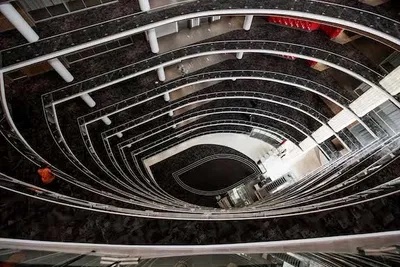Delay Analysis Information and Resources
Delays - The Basics
What is a Construction Delay?
A construction delay can be defined as the time overrun, either beyond the completion date specified in a contract, or beyond the date that the parties agreed upon for the delivery of a project. Delays are caused by an act or event which extends the time to perform a previously planned construction activity or which necessitates the addition of an activity or activities that were not planned causing a delay of the completion date.
What is a Construction Disruption?
Unlike a delay, a disruption does not impact on the completion date of the project. For example, an instruction is issued to the contactor to install additional doors on 2 floors. By effectively re-arranging resources the contractor is able to execute this instruction and to complete the project on the original completion. Despite having completed on time, the contractor has incurred additional costs, for which he is entitled to be reimbursed.
Excusable and Non-excusable delays
A non-excusable delay is defined as a delay caused by the contractor, or any aspect that is within the sphere of control of the contractor. The contractor would typically not be entitled to any additional time or compensation for this type of delay. An excusable delay, on the other hand, can be described as a delay caused by either of the following two factors: 1) Third parties or incidents beyond the control of the client and the contractor; and 2) The client or the client’s agents.
Critical Path
A project is made up of individual activities. The critical path of a project consists of activities that cannot be delayed without impacting the completion date of the project. In other words should any of the activities that make up the critical path is delayed, the completion date will be delayed by the same amount of time.Critical Path and
Critical Delays
The criticality of a delay can be defined as follows in terms of the ultimate impact on completion: 1) Critical delay – a delay on the critical path of the project, and as a result the final completion date of the project would be delayed; and 2) Non-critical delay – a delay that is not on the critical path, and would therefore, not impact the overall completion date.
Compensable Delays
Compensation will have to be considered if a delay is found to be excusable; and it should be established whether the delay can be defined as follows:
1) Non-compensable delay – an excusable delay caused by factors beyond the control of the client and the contractor. Although most forms of contract make provision for the extension of the contract completion date, the contractor will not receive compensation from the client; and
2) Compensable delay – an excusable delay caused by the client or the client’s agents. The contractual completion date will be extended; and the contractor will receive compensation from the client.
Concurrent Delays
A concurrent delay takes place when an excusable delay event (owner’s risk) takes place at the same time as, or overlaps with, the occurrence of a non-excusable delay event (contractor’s risk) and cause a delay to the completion date (the effect).
Float
Float is only applicable to non-critical activities and refers, in essence, to the surplus time assigned to activities in the construction schedule. Only when the float or surplus time is exhausted the activity will become critical or in other words delay the completion date of the project.

Delay Analysis - Methods
Cause and Effect
A universal approach seen in all delay analysis methods is the concept of cause and effect. In a delay scenario, a specific event would have an impact on the completion date of the project. The specific event, for example, the late provision of design information to the contractor, may cause a critical activity to be delayed, which will, in turn, cause the completion date of the project to be delayed.
The objective of delay analysis is to determine what the effect (impact on the completion date) of a specific cause (the delay event) is. The term delay is used to refer to both the cause of the delay (the delay event) and the effect of the delay. The fact that one term is utilized to describe two distinct events creates a further level of complexity in the analysis of delay claims. In the analysis, it is important to distinguish between the delay event and the effect of the delay.
Delay Analysis – Time of Application
Delay analysis methods can be further categorized in terms of when the analysis takes place. Two possibilities exist Retrospective Analysis and Prospective Analysis.
In a retrospective analysis, the delay has taken place and the effect on progress has been experienced. A retrospective analysis takes place after the project has been completed but it can also take place after the effect of the delay has ceased but prior to the completion of construction.
A prospective analysis determines the likely impact the delay will have on the contractual completion date of the project. The analysis takes place when the delay is busy occurring and the likely impact of the delay is forecasted.
Critical Path Techniques
The application of the following delay analysis methods requires a schedule with a clear critical path as a minimum requirement. Additional information is also required depending on the specific DAM chosen. The commonly utilized delay analysis methods are described but be mindful that not a large degree of consistency exists in the industry in the naming of the methods.
As-planned vs as-built
Description:
A comparison of critical path activities on the as-planned (baseline) schedule with the same activities on the as-built schedule to establish the net impact on the completion date.
Requirements to utilize this method:
• Baseline Schedule with critical path
• As-built Schedule with critical path
Time of application:
• Retrospectively
• The actual effect of the delay event has been experienced
• The analysis is done after the project completion or after the effect of the delay event ceased
Steps:
1. Use the initial as-planned (baseline) schedule and the as-built schedule for the project.
2. Compare each activity on the critical path of the as-planned (baseline) schedule with the same activity on the as-built schedule.
3. Determine the net impact on the completion date by taking into account increased and decreased activity durations.
Limitations:
• It does not take into account the dynamic nature of the critical path.
• It does not determine the individual effect for each delay on the project completion date.
• As-built schedules are time-consuming to develop and are not always readily available.
• The utilization of as-built information to develop the as-built schedule can lead to manipulation.
• Considerable skill and experience are required to develop an accurate as-built schedule.
• Accuracy will be impacted by deficiencies in the as-built schedule.
Choose this method when:
• The compound effect of a number of delays needs to be established.
• Updated schedules and detailed progress updates are not available.
• Information on delay events is not readily available.
Impacted as-planned
Description:
Determine the effect on the project completion date by incorporating the delay into the initial as-planned (baseline) schedule.
Requirements to utilize this method:
• Baseline Schedule with critical path
• Delay event information
Time of application:
• Prospectively
• The effect of the delay event has not been experienced or is still ongoing
• The likely effect of the delay is forecasted
Steps:
1. Use the initial as-planned (baseline) schedule for the project.
2. Incorporate the delay event as activity in the as-planned schedule and link it to all activities that it will impact.
3. Recalculate the completion date.
4. The difference between the initial completion date in the as-planned (baseline) schedule and the completion date on the recalculated schedule will constitute the effect of the delay.
Limitations:
• The initial as-planned (baseline) schedule is not a true reflection of the actual execution of the project as it is done prior to the start of the project and not updated to reflect changes in execution.
• If this method is utilized at any time after the initial commencement of the project it will most likely not provide a realistic impact on the completion date.
• Accuracy will be impacted by deficiencies in the initial as-planned (baseline) schedule.
Choose this method when:
• The delay event occurs at the beginning of the project or shortly after.
• Time and budget for the analysis are very limited and the accuracy of the outcome is not that important.
• An initial estimate for the impact of a delay is required.
• The actual effect of the delay event is not yet known.
Collapsed as-built
Description:
Determine the effect on the project completion date by eliminating delays from the as-built schedule.
Requirements to utilize this method:
• As-built schedule with critical path
• Delay event information
Time of application:
• Retrospectively
• The actual effect of the delay event has been experienced
• The analysis is done after the project completion or after the effect of the delay event ceased
Steps:
1. Use an as-built schedule for the project. The as-built schedule should include the delay events.
2. Remove the delay events from the as-built schedule.
3. Recalculate the completion date to determine when completion should have occurred if the delays did not occur.
4. The difference between the actual completion date in the as-built schedule and the completion date on the recalculated schedule will constitute the effect of the delay.
Limitations:
• As-built schedules are time-consuming to develop and are not always readily available.
• The utilization of as-built information to formulate the as-built schedule can lead to manipulation.
• Considerable skill and experience are required to develop an accurate as-built schedule.
• Accuracy will be impacted by deficiencies in the as-built schedule.
Choose this method when:
• The actual effect of the delay event is known.
• An accurate as-built schedule is available or can be developed.
• A baseline schedule is not available.
Window analysis
Description:
Determine the effect on the project completion date by incorporating the delays within a specific time window.
Requirements to utilize this method:
• Baseline Schedule with critical path
• Delay event information
• As-built schedule with critical path
Time of application:
• Retrospectively
• The actual effect of the delay event has been experienced
• The analysis is done after the project completion or after the effect of the delay event ceased
Steps:
1. Use or develop an as-built schedule for the entire project duration.
2. Divide the as-built schedule in a number of time periods (windows).
3. Chronologically update the windows with the delays experienced within this time period.
4. Compare the completion dates calculated for each of the time windows to determine the total delay during the specific time period considered.
Limitations:
• Complete project records and updated schedules throughout the project period are required to successfully execute this method.
• The involved analysis process is very time consuming and expensive.
• Accuracy will be impacted by deficiencies in the as-built schedule.
• The utilization of as-built information to formulate the as-built schedule can lead to manipulation.
• Considerable skill and experience are required to develop an accurate as-built schedule.
Choose this method when:
• Updated schedules throughout the project period are available.
• The actual effect of the delay event is known.
• An accurate as-built schedule is available or can be developed.
Time-impact analysis
Description:
Determine the effect on the project completion date by incorporating the delay into a contemporaneous schedule.
Requirements to utilize this method:
• Baseline Schedule with critical path
• Contemporaneously updated Baseline Schedule or information to update the Baseline Schedule
• Delay event information
When to utilize:
• Prospectively
• The effect of the delay event has not been experienced or is still ongoing
• The likely effect of the delay is forecasted
Steps:
1. Use a contemporaneously updated (baseline) schedule for the project.
2. If an updated schedule is not available, update the baseline schedule with current progress information.
3. Incorporate the delay event as activity in the updated schedule and link it to all activities that it will impact.
4. Recalculate the completion date.
5. The difference between the initial completion date in the updated schedule and the completion date on the recalculated schedule will constitute the effect of the delay.
Limitations:
• The actual effect of the delay is not provided as the method is executed prospectively (before the actual impact of the delay is known).
• The update schedule that is utilized as the basis of the analysis could possibly include acceleration and mitigation of the delay by the contractor impacting the accuracy of the forecasted effect of the delay.
• Accuracy of the results is dependent on the quality of the baseline schedule and the updated schedule.
• This method can be expensive and time-consuming.
Choose this method when:
• The actual effect of the delay event is not yet known.
• A contemporaneously updated schedule is available or can be compiled.
• When the importance of the outcome justifies more time and money being spent on the analysis process.

